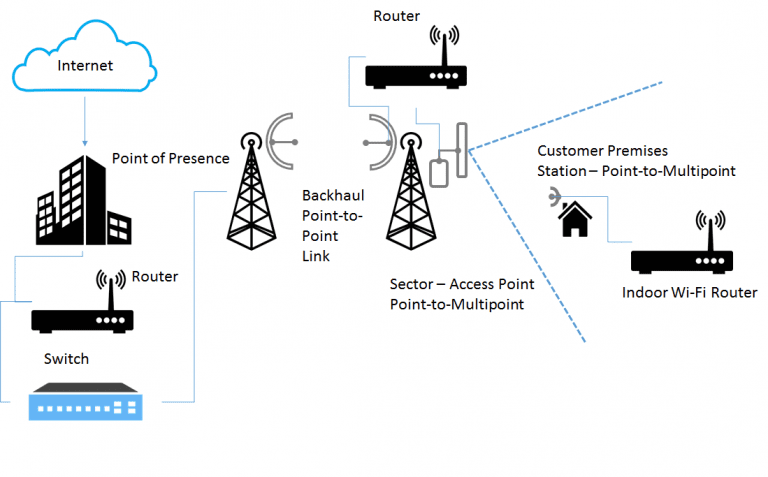Part 5 of 5 – Introduction to networking – putting it all together
- Megan
- Latest News
- 0 likes
- 3815 views
- 0 comments
If you have been following our blog posts over the past two months, you would have read and understood our portion on broadband wireless and this blog series focused on the introduction to networking where we discussed the building blocks of networks such as routers and switches, IP addressing, understanding subnetting and basic routing protocols.
So, in this blog, we will try to marry the two concepts at a very low level, so that you can have a better understanding of how to assign IP addresses to your wireless network.

In this Network overview, you have your (1) incoming fibre connection to your Point of Presence (PoP) which terminates on your router, which is connected to your switch. On this same switch, you have your (2) PtP radio that forms a backhaul link that connects to another PtP radio on a second tower, this can be described as a bridged network. On the second tower, you have (3) the PtP radio connected to a router, and to this same router, you have your (4) Point-to-Multipoint (PtMP) radio with sectorised antenna. At your customer’s premises, you have (5) a wireless subscriber unit (SU) that connects to the PtMP sector located on the second tower. Inside the customer’s premises, a (6) Indoor Wi-Fi Router is used for last leg connectivity to wireless-enabled devices such as mobile phones, tablets, PCs and laptops.
Please note that the IP addresses used are merely for the purpose of this blog series and is used as an example.

Okay, so firstly our incoming internet connection into the PoP is done using a public IP address, for example, 41.x.x.x range, which terminates on our router. On the Router, we can implement NAT or Network Address Translation. NAT is the process where a network device assigns a public address to a computer inside a private network. In layman’s terms, this allows you to assign a private IP address for the rest of your network and conserving the number of public IP addresses used.
As you have noticed, we move from the 41.x.x.x range to the 192.168.x.x/24 range. This allows us to assign static IP addresses to both the PTP radios in our backhaul link.
The reason why we added a router on our second tower, is to set up a PPPoE server, this allows you to have an authentication method for your subscribers connecting to the PtMP Sector. Which allows for more control over the subscriber bandwidth allocation and usage control.
Within the client’s premises, we added an indoor Wi-Fi router which is set up to act as a DHCP server – which will dynamically assign IP addresses to all stations (mobile devices, laptops, PCs etc.)


Comments
View Comments